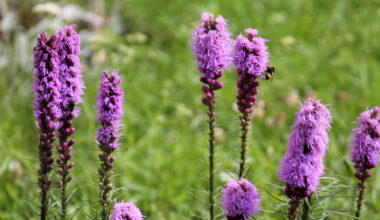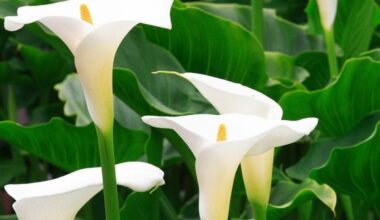The calamansi, or calamansio, is an apartment orange tree that adapts very well to the heated interior of our homes.
The blooming of this small orange tree can occur all year round, with a spring peak. The small, fragrant white flowers, with a sweet orange scent, are followed by round, bright orange fruits. From 1 to 2 inches in diameter, they remain decorative for a long time on the calamansi.
Their thin skin adheres poorly to the edible yellow-green flesh, which is not appreciated raw because it is very acidic. Cooked, the latter allows to make a slightly bitter perfumed jam, perfect with foie gras in particular.
Contents
Planting, repotting a calamansi
Where to plant it?
In the open ground, it needs a rich soil that remains cool in summer but still drains.
Its culture in pot is the most frequent.
It always needs a sunny exposure, outside as well as inside.
Calamansi in pot
Grown in a pot, it is a nomadic plant, decorating the terrace, the veranda or the balcony all summer long (all year long in mild climates) and taking its winter quarters in the house where it continues to provide a show.
If you leave it outside all year long, plant thyme or lavender under its cover. If you only take it outside all summer, decorate its base with marigolds to echo the color of the fruit. For a permanent culture in the apartment, some dark purple miseries create a contrasting and original duo in collar around the foot.
Calamansi in the ground
The low hardiness of the calamansi, 28°F, allows its plantation in full ground only in the regions where the frosts are rare or non-existent, of weak intensity and short duration. Elsewhere, it is grown in containers, to be protected from frost in winter.
In the open ground (under mild climate), the calamansi is used in isolation near a terrace, on a green setting of the grass or of a flower bed if it is cultivated on stem. It is also the ally of the four seasons to mark the entrance of the garden, the vegetable garden or the orchard.
When to plant the calamansi?
In the open ground, the spring period (March and April) is more favorable for planting.
Repotting is best done at the end of summer when the fruit has formed.
How to plant the calamansi?
Give it a large enough pot to grow well, but it is preferable to choose a pot according to the size of the plant and to go up in size as the plant grows.
Choose a “special citrus” substrate, generally composed of a peat base with a little clay and draining elements like pozzolan.
Maintenance of the calamansi
Watering the calamansi in the ground
Calamansi should be watered regularly throughout the summer, especially during the first two years after planting, while its root system is well developed. Thereafter, keep the soil cool in summer, even if it can withstand short periods of drought.
From autumn onwards, watering can be reduced as growth slows down with the drop in temperature.
Watering the calamansi in pots
Container grown calamansi should be watered regularly to keep the soil cool but not wet around its roots. Space out watering in the fall and winter, allowing the soil to dry between waterings.
If the calamansi is housed in a bright room in the house, adjust the watering because it does not take a vegetative break as soon as the temperatures exceed 59°F. Spray regularly the foliage especially when the atmosphere of the room is dried out by the heating.
A light drizzle on the flowers will improve pollination by dispersing pollen between the different ones and thus increase fruiting.
Fertilization
In the open ground
At the beginning of spring, bring compost or organic fertilizer (especially in poor soil) to the calamansi, greedy like all citrus fruits. Complete with a fertilizer rich in potassium twice during the summer (May/July).
In pots
Every 15 days, from May to August, add a special citrus fertilizer to the watering. Repot your calamansi in spring every 3 years. Surface the years without repotting (change the soil on a few inches of thickness on the surface).
Protection of calamansi in winter
The calamansi is a particularly hardy citrus fruit. It is very resistant to cold weather and temperatures below 28°F.
In mild climates (orange tree zone or protected areas of the Atlantic coast), it may be necessary to protect it with a forcing veil if an unusual cold spell is announced, especially if it is a young subject or if it is grown in a pot, its sensitivity to cold being increased.
In other regions, grow it in a pot inside the house or in the veranda. The calamansi appreciates to spend the beautiful season outside in a subdued situation. To avoid leaf burn as soon as night temperatures exceed 50°F, don’t forget to bring it inside at the end of the summer, watching the temperatures drop.
Good to know: without thermal shock (below 59°F), it does not experience a vegetative rest and continues to flower and fruit.
Pruning the calamansi
It is not necessary to prune the calamansi, however this operation allows to rebalance the silhouette of the shrub and to preserve a compact port.
Do a light pruning in winter, after the fruit harvest, by reducing the current year’s shoots. Not too much because the calamansi flowers and fruits on the current year’s shoots.
Pests and diseases
Scale insects
Frequent and persistent pests on indoor grown plants. Exuding a honeydew, they are conducive to the appearance of fumagine, a kind of black powdery fungus that covers the foliage. Clean the affected leaves or spray with a mixture of rapeseed oil and a few drops of black soap.
Red spiders
They are favored by dry atmospheres. Spray the foliage regularly even in winter. Take the calamansi out in the summer.
In the open ground in a mild climate, the calamansi is resistant to diseases and pests. On the other hand, cultivated in pots, it can suffer some attacks.








